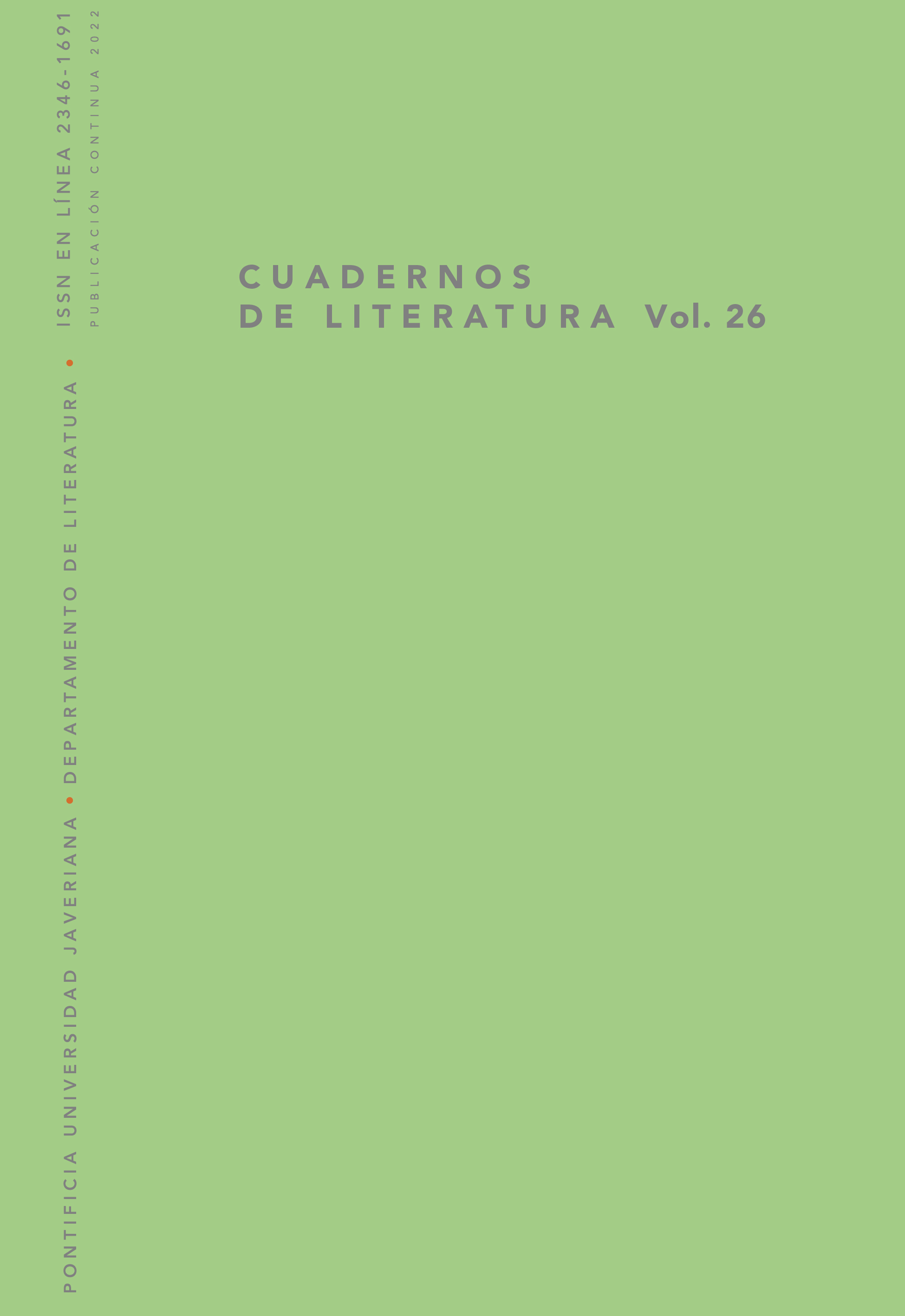Resumen
Este trabajo explora en algunas obras producidas a finales del siglo XX y comienzos del XXI y el lugar de las prácticas escritas mecánicas y manuales en una era de inscripción digital. Interesa analizar estas formas de sobrevivencia, de reapariciones, que se concentran en la difícil relación máquina y mano, precisamente en Sergio Chejfec, Mario Levrero y Jacqueline Goldberg. En cada uno veremos una modalidad distinta de resurgimiento, de re-aparición, de las escrituras a mano y a máquina, inspirados por el impacto de su relación con el trabajo en computador.
Agamben, Giorgio. Estancias. Valencia: Pretexto, 1995.
Berardi, Franco. La fábrica de la infelicidad: nuevos formas de trabajo y movimiento global. Madrid: Traficantes de sueños, 2003.
Bolter, Jay David, y Richard Grusin. Remediaton: Understanding New Media. Cambridge: MIT Press paperback, 1999.
Borg Oviedo, Matías. “Vida sin obra: Escritura inoperante en El discurso vacío de Marío Levrero”. VIII Congreso Internacional de Teoría y Crítica Literaria Orbis Tertius, 7 al 9 de mayo de 2012. En: http://www.memoria.fahce.unlp.edu.ar/trab_eventos/ev.1580/ev.1580.pdf
Chejfec, Sergio. Últimas noticias de la escritura. Buenos Aires: Entropía, 2015.
Chejfec, Sergio. Teoría del ascensor. Buenos Aires: Entropía, 2017.
De la Parra, Teresa . Obra: narrativa, ensayos, cartas. Caracas: Biblioteca Ayacucho, 1982.
Foucault, Michel. Tecnologías del yo. Trad. Mercedes Allende Salazar. Barcelona: Paidós, 2008.
Goldberg, Jacqueline. El cuarto de los temblores. Caracas: Oscar Todtmann Editores, 2018.
Hertz, Garnet, y Jussi Parikka. “Zombie Media: Circuit Bending Media Archeology into an Art Method”. Leonardo 45.5 (2012): 424-430, https://doi.org/10.1162/LEON_a_00438
Kittler, Friedrich. No hay software y otros ensayos. Caldas: Universidad del Caldas, 2017. https://doi.org/10.2307/j.ctv8xnjb3
Levrero, Mario. El discurso vacío. Buenos Aires: Penguin Random House, 2016.
Levrero, Mario. La novela luminosa. Buenos Aires: Penguin Random House, 2018.
Leslie, Esther. “Walter Benjamin: traces of Craft”. Journal of Design History (enero, 1998). https://doi.org/10.1093/jdh/11.1.5
Leslie, Esther. Walter Benjamin: Overpowering conformism. Londres: Pluto Press, 2000.
Leslie, Esther. Walter Benjamin: la vida posible. Santiago de Chile: Ediciones Universidad Diego Portales, 2015. https://doi.org/10.2307/j.ctt18fs4zd
Manovich, Lev. El software toma el mando. Barcelona: Editorial UOC, 2013.
McLuhan, Marshall. Comprender los medios de comunicación. Barcelona: Paidós, 1996.
Milone, Gabriela. “Notas para una eventual ficción caligráfica”. Landa 9. 2 (2021): 270-289, https://revistalanda.ufsc.br/wp-content/uploads/2021/08/14-Gabriela-Milone-Notas-para-una-eventual-ficcion-caligrafica.pdf
Neef, Sonja et al. Sign Here!: Handwriting in the Age of New Media. Amsterdam: Amsterdam University Press, 2006. https://doi.org/10.5117/9789053568163
Socorro, Milagros. “La velocidad en la escritura”. Clímax. En: http://milagrossocorro.com/2006/04/la-velocidad-en-la-escritura/#sthash.rco7a2wd.dpuf (04/06)
Tejada, Luis. “El espíritu y la letra”. En: Loaiza Cano, Gilberto (ed.), Nueva antología de Luis Tejada. Medellín: Universidad de Antioquia, 2008, 143-144.

Esta obra está bajo una licencia internacional Creative Commons Atribución 4.0.


